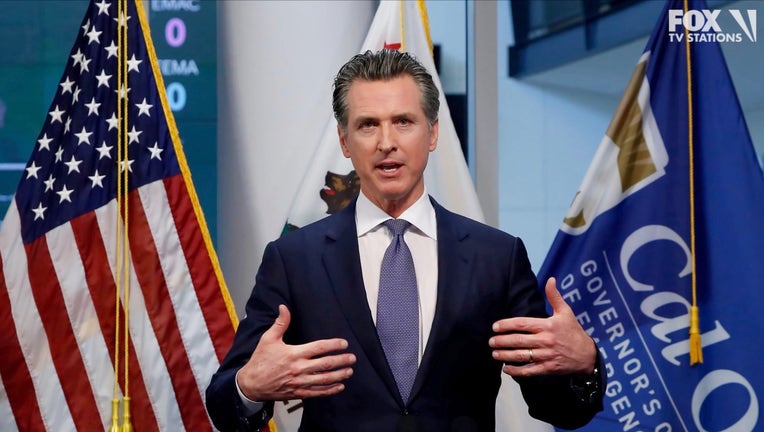Governor: California bought time to prepare virus peak

Gov. Gavin Newsom updates the state's response to the coronavirus at the Governor's Office of Emergency Services in Rancho Cordova, Calif., Monday, March 23, 2020. Newsom said he would close parking lots at dozens of beaches and state parks to preven
LOS ANGELES - California's extraordinary efforts to keep people home have bought the time needed to prepare for an expected peak surge of coronavirus cases in coming weeks, Gov Gavin Newsom said Tuesday.
A spike of new cases has not come as quickly as expected, though Newsom was reluctant to say whether that means the impact on the state won't be nearly as dire as initially feared. Two weeks ago, Newsom had said 25 million people could be infected under a worst-case scenario.
“To be truthful and candid, the current modeling is on the lower end of our projection as I talk to you today,” Newsom said at a news conference. “Very easily tomorrow I could say something differently, and that's why one just has to be very cautious about this.”
Under Newsom's direction, the state has been scrambling to add 50,000 hospital beds to its 75,000 to ensure enough space for all potential patients during a peak. He said the slower-than-forecast increase in cases means the peak is now likely in May.
Health officials have warned that as testing ramps up the number of cases will grow, in some cases very quickly. That is occurring but California but not has rapidly as some other states, including Louisiana and Michigan where cases have skyrocketed in the last two weeks.
On Tuesday, there were about 7,500 cases and at least 153 deaths reported in California, according to data kept by Johns Hopkins University. Michigan, which has 30 million fewer residents, had 7,600 cases and 259 deaths.
Los Angeles County, the state's largest with 10 million residents, has about one-third of the state's cases and reported its largest one-day increase Tuesday — 548, along with 10 deaths. The county saw 890 new cases over 48 hours and the overall total has tripled in a week.
“The most important step to take right now is to stay home,” county health director Dr. Barbara Ferrer said.
Many have credited the state’s early action to issue stay-at-home orders -- first in the San Francisco Bay area two weeks ago and then a few days later in Los Angeles and the rest of the state — with successfully slowing the rise of cases.
The rate of hospitalizations and deaths could indicate those measures may be “flattening the curve,” meaning the rate of cases is slowed so it doesn’t exceed capacity of hospital beds. Instead of a graph with a steep curve to a peak number of cases surpassing available beds, the curve is gradual and flatter.
For most people, the coronavirus causes mild or moderate symptoms, such as fever and cough that clear up in two to three weeks. For some, especially older adults and people with existing health problems, it can cause more severe illness, including pneumonia and death.
On Friday, Dr. Jahan Fahimi, an emergency physician at the University of California, San Francisco said that they had seen a slow daily increase in hospital cases and were anxiously awaiting a surge.
“We are in a flattened curve," he tweeted. “While the surge is coming, we have time.”
Models created by the University of Washington also show a flatter curve and fewer deaths than expected, though the projection of about 5,000 deaths by June 1 underscores things will get significantly worse before improvement is seen.
Newsom and other officials say they are not taking anything for granted and don’t want residents to become complacent.
On Tuesday, San Francisco and five surrounding counties extended shelter-in-place orders until May 3 and added new restrictions, including closing playgrounds, dog parks, public picnic areas, golf courses, tennis and basketball courts, pools, and rock climbing walls.
The new order also prohibits most residential and commercial construction.
"We are bending the curve," Santa Clara County Public Health Officer Dr. Sara Cody said at a news conference. “But it's not enough.”
___ Ronayne reported from Sacramento. Associated Press reporters Cuneyt Dil and Don Thompson in Sacramento, Olga R. Rodriguez in San Francisco and Christopher Weber in Los Angeles contributed to this story.

